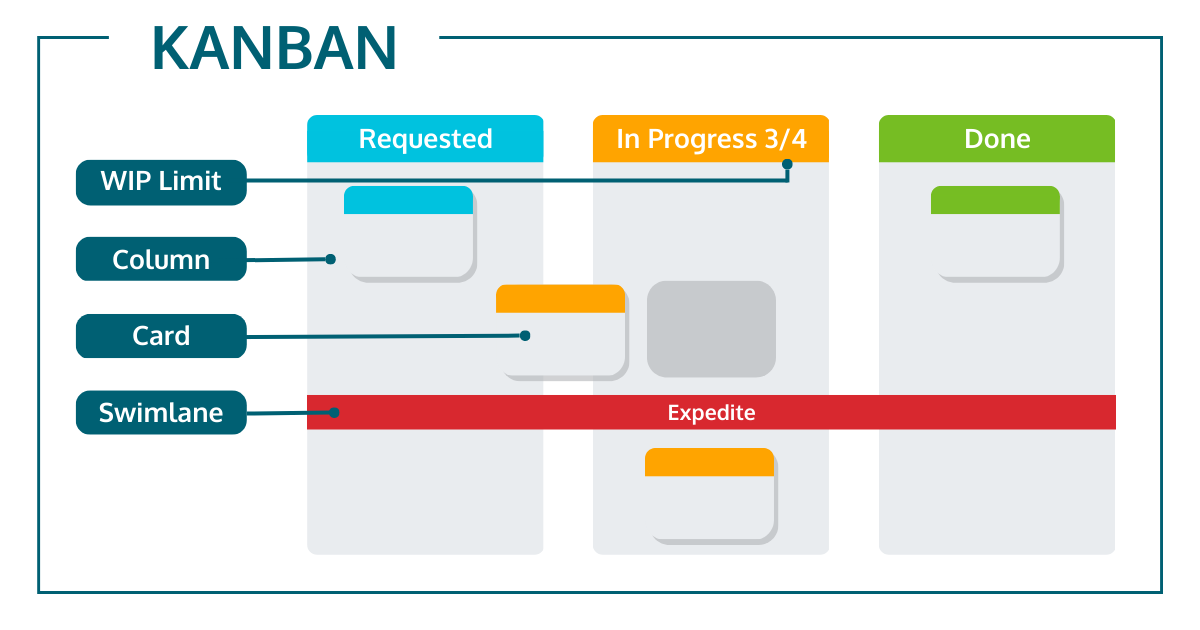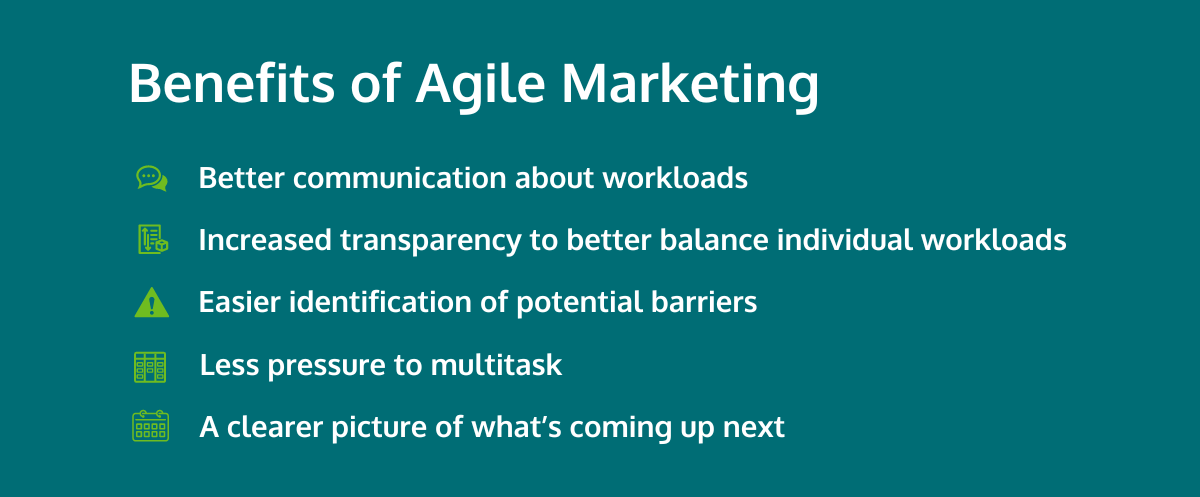
"Today, working within Agile feels like home. And, though I didn’t realize it at the time, heading up Quadient marketing's Agile journey would lead me to a new and rewarding role as a senior content creator."
A success story by Jayati Shah-Thiel
Sr. Content Program Manager, ICA at Quadient

As a people person, I was in my element as an event manager at Quadient, a global company that delivers solutions to help customers create relevant and personalized connections. My role involved managing global events, such as our annual user conference and trade shows.
Then 2020 happened.
The pandemic rendered my role nearly obsolete overnight. Travel ground to a halt and event venues closed their doors in an effort to contain COVID-19.
My dream job was on pause, with no signs of a quick return.
I was a mess for a minute. OK, several minutes. But I’m not one to wallow. I love Quadient, and I knew this halt wouldn’t be the end of my time here. So I talked with our Chief Marketing Officer, Tamir Sigal, to consider my next big adventure.
Tamir told me he’d had the desire to shift the workflows inside Quadient toward Agile marketing – a work style I’d only heard about in passing. Historically, the Quadient global marketing organization was decentralized. Part of Tamir’s vision is bringing the various marketing teams together, working as one. Tamir asked if I would be interested in leading that charge.
I love a challenge, and although I knew next to nothing about Agile at the time, I accepted the role of Agile Marketing Coach. By my side was David Seaton, our Director of Marketing Operations. David’s team would be the first marketing team to pilot Agile at Quadient. I transitioned into Marketing Operations and worked with David on understanding the challenges of the greater marketing team and collected requirements on what we wanted to achieve in moving to Agile.
Leading Agile felt like going out on a limb professionally. But saying “yes” transformed my grief over the loss of my dream job into excitement about what would become a 15-month quest – guided by AgileSherpas – to select the methodologies that would work for Quadient marketing and resonate with our global team.
Today, working within Agile feels like home. And, though I didn’t realize it at the time, heading up Quadient marketing's Agile journey would lead me to a new and rewarding role as a senior content creator.
Hello, Nerves. Meet AgileSherpas!
Excited as I was to lead our evolution into Agile, I was also a bit anxious. I had a TON of research to do, and I was facing a looming deadline to find a speaker to introduce Agile to the global team at our 2020 virtual marketing summit.
There are a lot of Agile consultants out in the wild, but AgileSherpas immediately stood out from the pack. After just a few Google searches, I found myself immersed in AgileSherpas’ webinar videos, and blog articles.
Reading the digital edition of Andrea’s book, “Mastering Marketing Agility,” made the benefits of Agile clear – and made it clear that choosing AgileSherpas was the right decision. With their guidance, we’d summit the biggest challenge of implementing Agile marketing: acknowledging and deconstructing the mantra of “how we’ve always done things” in favor of more efficient, effective workflow management.
Big Change Requires Big Flexibility
Whether it’s new leadership, a new workflow, or even a new coffee vendor, acclimating to change can bring growing pains. Amidst all the social and environmental changes of the pandemic – including our shift to Work from Anywhere in 2021 – most Quadient teams were receptive to doing things differently, as long as it was going to be positive.
Though attitudes were positive, some processes and workflows felt sacred, despite the need for updates to improve our team and customer service. AgileSherpas was instrumental in helping us start our transition. We worked together to understand the best flavor of Agile for Quadient marketing before engaging the rest of the global team.
AgileSherpas helped us understand why some team members were digging in their heels while others were excited to shake things up. They suggested holding intentional conversations with everyone across the global Quadient marketing organization – yes, everyone – individually or as teams to get a personal understanding of the concerns, perceptions, and ideas that could help or hinder our shift to Agile.
Over a couple of months, I met with every Quadient marketing team member from every corner of the world. These conversations provided AgileSherpas and me with a better understanding of which Agile methodologies could benefit the teams most and which might be tough or unnecessary to implement. In parallel, David and I also worked on selecting and standardizing the tool for Quadient to use to facilitate the transition to Agile.
From there, we developed a hybrid program, which AgileSherpas called “sampling from the Agile buffet.” They helped us select specific methodologies – such as Kanban for workload planning, regular standup meetings, and Work In Progress limits – to right-size our current work and better plan for what’s coming down the pike.
Related reading: How Doing Standups Wrong Can Kill Your Team Spirit
Sampling from the Agile Buffet
Traditional Agile methodology was designed to support developers in the tech industry who work individually. Marketing typically is more nuanced, with more need for team interconnectivity. So, it didn’t make sense to try cramming every Agile methodology into Quadient’s program – and that’s a core philosophy AgileSherpas brings to the table.
We assembled a project team to vet which pillars made sense for our global marketers. The team was composed of representatives from different functions, departments, and roles so we could understand how each ripple of change might impact workflows, workloads, and communication.
Using the sprint methodology, we assigned each team member specific tasks to research and, then, asked them to compile their recommendations.
Some of the findings weren’t surprising. For example, we assumed that holding traditional daily standup meetings wasn’t going to work for teams that are split across time zones and continents. So, we designed team-by-team approaches to structure our touch-base meetings similarly to standups but at a different cadence.
As the project team tested different methodologies, one of the most surprising findings was that most of our teams LOVED using Kanban for planning. They reported that the simple act of writing down and visualizing their workloads without extreme timeboxing was “game-changing.”

The visual representation of steady, continuous workflows provides a level of transparency our teams hadn’t experienced before – one that basic MS Teams meetings and email chains had not matched. Establishing Work In Progress limits was especially empowering because team members could:
- Reduce the urge to multitask, which no one really does well.
- Point to real data to back up their stance that they couldn’t take on more work.
- Plan and share projects while making room for inevitable last-minute requests that used to derail other ongoing work.
- Negotiate deadlines and workloads without going straight to “no.” Now, the conversation is more like, “Not now, but at *this* time.”
Through Kanban, our project loads are managed in real-time and are made widely available with the latest information for team resource planning.

"The emotional relief is real. Having access to tangible workload data helps reduce the stigma of certain teams being “naysayers” for turning down projects due to heavy behind-the-scenes workloads. And working through planning together helps curb the volume of last-minute requests."
Jayati Shah-Thiel
Sr. Content Program Manager, ICA at Quadient
“What’s in It for Me?”
Through all the hard work of launching Agile at Quadient, AgileSherpas helped me continually lead with “what’s in it for me?” messaging with our teams. Encouraging commitment to new processes is easier when they understand the benefits of Agile marketing.

Achieving buy-in amongst our hardest-won-over teams has been personally and professionally satisfying. We get more work done – better and more efficiently – and my colleagues have a greater share of voice in how tasks are assigned and how projects are delivered.
Going Agile has been a partnership win for leadership and the implementation teams. And I kept that collaborative spirit alive when this phase of our Agile transformation was complete: when I moved on to my next adventure in March 2022 as a senior writer on our small-but-mighty content team.
Applying Agile to (Endless) Content To-Dos
The lessons I learned leading our transition to Agile have made me a better content teammate and creator. I entered this role with a solid understanding of how to balance the creative process with burgeoning deadlines and inevitable quick-turn requests.
Creatives sometimes feel blocked in by deadlines for planned work. We have to be in the right mindset to do our best work, and there’s sometimes little notice for big content needs. So, sprint planning and workload management look different on creative teams, and we are continually taking stock, evaluating, and evolving which Agile methodologies work best for our team.
Like many other Quadient marketing teams, we love using Kanban and Agile task boards to plan our work. It’s so helpful to visualize how individual creators’ work adds up to the whole team’s progress – and who has the availability to take on more, even if a current project feels neverending.
However, we’re re-imagining how we use the Work In Progress methodology to help our writers create content without feeling too much timebox-related pressure. Because of time zone differences and ongoing daily tasks, we can hold abbreviated status meetings on a looser schedule. In these meetings, we can cover the basics of what:
- Happened since the last meeting
- Is on the schedule for today
- Is keeping us from moving forward
While our approach is a bit different from other Quadient teams, it’s working well to keep our creators happy and on track.
Every day, I take the global perspective of Quadient I gained from my Agile training and apply it to my creative work. My training helps me appreciate different creative perspectives and how we can better support the company and our clients by working as a team.
Related reading: The Power of Hybrid Agile Marketing Frameworks
Together, We Can Do Hard Things
Now that we’ve completed our first full year of Agile implementation, Quadient is going back for seconds from the Agile buffet. David Seaton’s team is leading the charge to level up our Agile practice – refining our methodologies internally and across teams to build on the framework AgileSherpas helped us develop.
Transitioning to Agile isn’t for the faint of heart. But it IS for those who want to grow and work together as an interconnected, forward-moving unit. I don’t look back on Quadient’s transition thinking, “Darn, if only we could have done XYZ differently.” Instead, we identify opportunities to build on what we’ve accomplished together so far – and what we can achieve when we take a moment to assess, align, and empower every teammate with the tools to do good work.
AgileSherpas’ partnership and ongoing guidance increased my ability to handle change management and objections – which any content creator knows are abundant – on individual and team levels.
I’m proud of our work to date, and I’m grateful to Tamir for believing in my ability to lead this transformation. Big change is hard – those times when I thought shifting to Agile was impossible, AgileSherpas swooped in to restore my confidence and keep us moving forward. They reminded us that, together, we can do hard things.

